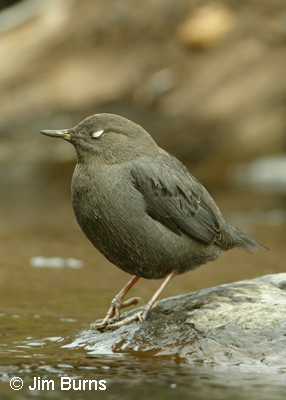
Well, a lot of my bird photos look like #$%& too. You just get to see the good ones. But, I think this is a two part question. I'll discuss the "how" of bird photography in my next column, but first I'm going to tell you the "why," because I think that's the more important issue.
My birding mentor and her husband no longer subscribe to any newspapers--too much bad news, too many scenes of violence and grief to which our culture has become inured. I was initially drawn to nature photography because it provided an island of tranquility in the turbulent stream of my daily life. I press on with it because immersion into the scenes I see in my viewfinder allows me to capture and share those moments when color, form, and context combine in indelible and timeless images which shout out the life affirming beauty of nature.
There is a small, gray, wren-like bird which inhabits the rocky streambeds of our mountain west. Its common name is American dipper. It is our only aquatic songbird, exquisitely evolved to forage underwater in swift currents for aquatic insects and tiny fish amidst rocks and stream debris. Many birds have a secondary eyelid, called a nictitating membrane, which can be drawn horizontally across the eye to clean and moisturize the cornea. In waterbirds, including the dipper, this membrane is transparent to aid their vision underwater.
Dippers are usually seen atop streambed boulders preening their feathers to maintain insulation needed for cold mountain waters. As you would expect from their underwater lifestyle, they blink a lot, and most birders, observing the white flash across the eye, assume they are seeing the nictitating membrane. Not true. In dippers, unlike most birds, the actual eyelid is feathered, and those feathers are pure white. Ornithologists speculate their white eyelids provide a means of visual communication, dipper to dipper, in the tumult of noise and spray along the fast running waters where their song might be drowned out.
Let my images be the dipper's eyelids. Let my images shine like beacons through the cacophony of discordant stimuli which bombard our daily lives with the trivial and the ugly. Better yet, buy a digital camera of your own and begin seeing for yourself through its viewfinder. Open its shutter, open your eyes and your soul to the beauty around you. You may never shoot a magazine cover, but you will capture something much more important--those indelible moments from the natural world which affirm why we are here and why we should celebrate life. Etched in your heart, those images and that beauty will forever be picture perfect.